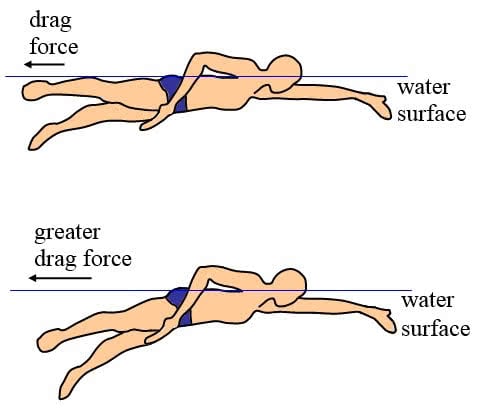Every four years the world gets to come together to experience an event unlike any other. From the pageantry to the ceremonies to the myriad competitions themselves – the Olympics are not just every day “sporting events”; they are individual stories of human drive, determination and spirit. Aquatic sports, like swimming are the second most popular Olympic events, and this year in Rio should prove no different. The best swimmers fortunate enough to make it through their respective countries’ various competitions and qualifiers have been honing their skills, their bodies and their minds to achieve one thing and one thing only – the gold medal.
But what does it take for an Olympic swimmer to walk away with any medal at all? Obviously, athletes become athletes through many hours in the pool, honing their bodies into physical perfection and doing whatever it takes to shave whatever small amounts of time off of their performance that they can. Fractions of seconds can mean all the difference between a non-medal finish, a personal best, a gold or even a world record. But beyond the physicality of a swimming event, itself, there is another almost hidden aspect to Olympic glory that makes all the difference: understanding the science of aquatics and engineering more effective solutions that lead to ultimate victory.
First of all, since swimmers are fundamentally bodies that traverse water, much of the science of swimming comes down to understanding the basics of fluid dynamics. To move any object rapidly through a fluid such as water, it is necessary for a swimmer to decrease their drag while maximizing their thrust.
Drag is the oppositional force pushing back upon an athlete’s forward movement. There are three types of drag that competitive swimmers encounter: frictional, pressure and wave. Frictional (or “viscous”) drag is the resistant force of friction that acts upon the swimmer and is based upon their total surface area and relative smoothness of that surface area. For many years, swimmers have been minimizing this by wearing the traditional swim cap to shaving all body hair.

With modern technology and computer-based analysis, however, there have been advances in even the swimsuits that the athletes wear to minimize drag. Modern day competitive swimsuits are designed to cover more body surface area, replacing the relative roughness of the skin of one’s body with smoother fabrics. The suits are relatively seamless and are bonded together not through traditional sewing but through ultrasonic welding. Additionally, the suits provide compression to help increase efficiency while minimizing surface area. Lastly, the suits use low-profile and “hidden” zippers. When all is said and done, today’s advanced swimsuits can reduce frictional drag up to as much as 24% over their more traditional counterparts.

Pressure drag is the frontal force of the water pushing back upon the swimmer as they accelerate. Much like with aircraft and automobiles, CFD analysis shows that a more streamlined profile through the minimization of contact with the water will also produce a considerable reduction in drag forces. Much of this streamlining can be achieved through:
- Keeping one’s head down
- Maintaining a “flatter” profile in the water
- Reducing one’s frontal area
- Keeping one’s elbows closer to the surface of the water
- Maintaining a tighter kick with pointed toes.

Additionally, lower-profile swim goggles are more commonly used as well.
Wave drag is the wall-like effect that dampens forward movement and is created as swimmers make their own waves and wakes. Unlike with frictional and pressure drag, there is little that an athlete can do to minimize this (other than through the techniques mentioned above). That being said the waves created by swimmers can be mitigated as much as possible through engineering a better, “faster” pool. Much of this is done through dampening the kinetic energy of the waves in the form of:
- Deeper pools (minimum of 10 feet deep)
- Wider pools
- Wider swimming lanes
- Specially-designed wave “swallowing” troughs at pool edges
- Line lanes that dissipate the waves by rotating.

In general, the swimmers that are placed in the most central lanes often have the best chance to avoid waves since they are most prevalent at the edges of the pool. In fact, most of the time, the outer more lanes are not even used.
Increasing thrust is typically a technique-based endeavor and there are variations in opinion as to what works. “Sculling” was a method introduced back in the 60s and 70s. The theory behind sculling was to use lift rather than drag to propel a swimmer forward using side-to-side motions once the hand is submerged. A popular method sometimes used today is called the “deep catch”, where the submerged arm is thrust deep into the water much like a propeller and the water is directed along the length of the swimmers body. Some studies actually found the deep catch method capable of producing 18-20 percent more thrust than sculling, although there are still die-hard scullers who still beat deep catchers. One last popular method is to cup the hands when submerged.
So this August as you sit down to watch the thrills and excitement of your favorite aquatics events, make sure to take note of the swimmers and their techniques. Each one of them has spent a lifetime developing every last bit of advantage they can get over their fellow competitors. Make sure to glimpse all the innovation and design that went into the pool. One thing’s for sure…the winners who take home medals were the ones who not only trained to their own physical peaks, but also paid attention to the coaching, the science and technologies that got them there as well.

(0)